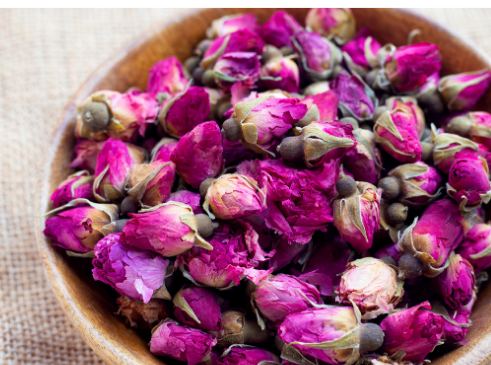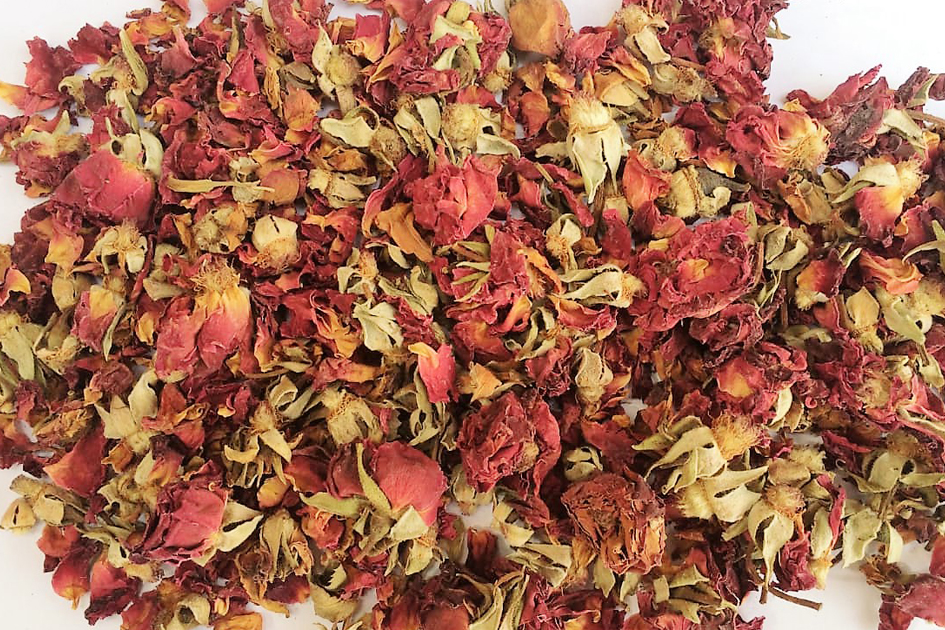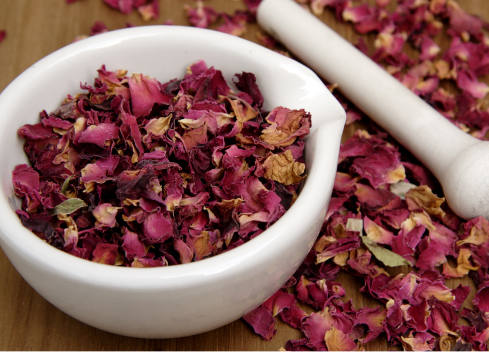Export Information on Dried Rose Petals (Egyptian Origin)
1. Product Name
Dried Rose Petals
Scientific Name: Rosa damascena (Damask Rose)
Common Names: Rose Petals, Dried Rose Buds
2. Description
Dried rose petals are derived from the Damask rose (Rosa damascena ), a species renowned for its fragrant and therapeutic properties. Egypt, particularly the region of El-Fayoum and other fertile areas, is a major producer of high-quality dried rose petals. These petals are widely used in teas, culinary applications, cosmetics, and aromatherapy due to their rich essential oil content and soothing aroma.
Appearance : Soft, velvety petals in shades of pink, red, or white, depending on the variety.
Texture : Brittle and lightweight when dried.
Odor : Strong, sweet, floral aroma.
Taste : Mildly sweet with a subtle floral flavor when brewed or consumed.
Moisture Content : Typically ≤ 10% to ensure preservation.
Essential Oils : Contains 0.02–0.05% essential oils, primarily composed of citronellol, geraniol, and nerol.
pH Level : Approximately 4.5–5.5 (slightly acidic).
Ash Content : ~5–8%.
Antioxidants : Rich in flavonoids, anthocyanins, and phenolic compounds.
Natural Pigments : Contains carotenoids and anthocyanins, contributing to its vibrant color.
5. Nutritional Information (Per 100 g)
Calories : ~325 kcal
Protein : 6.0 g
Fat : 1.5 g
Carbohydrates : 75.0 g
Dietary Fiber : 24.0 g
Vitamins :
Vitamin C: ~200 mg
Vitamin A: ~1,500 IU
Vitamin E: ~10 mg
Minerals :
Calcium: ~169 mg
Iron: ~10.0 mg
Magnesium: ~22 mg
Potassium: ~500 mg
Color : Vibrant pink, red, or white, free from discoloration or browning.
Foreign Matter : ≤ 0.5% (no visible stems, seeds, or contaminants).
Particle Size : Whole petals or crushed pieces as per buyer specifications.
Purity : Free from adulterants, artificial additives, or chemical residues.
Organoleptic Properties : Fresh, floral aroma; no off-flavors or odors.
Compliance with Local and European Specifications According to Food Safety
Total Plate Count (TPC) : ≤ 10,000 CFU/g
Yeast and Mold : ≤ 100 CFU/g
Coliforms : Absent in 1 g
E. coli : Absent in 1 g
Salmonella : Absent in 25 g
Aflatoxins : ≤ 4 ppb (as per EU standards).
8. Storage
Temperature : Store in a cool, dry place (≤ 25°C).
Humidity : Relative humidity should be ≤ 60% to prevent moisture absorption.
The packaging is in polypropylene bags, cardboard boxes, or as per customer request.
9. Shelf Life
Unopened Packaging : Up to 24 months under recommended storage conditions.
Opened Packaging : Consume within 6 months for optimal quality.
10. Applications
Used in herbal teas, infusions, and desserts for their floral aroma and flavor.
Added to jams, syrups, and confectionery for decorative and taste enhancement.
Health Benefits :
Rich in antioxidants, which help combat oxidative stress and inflammation.
Supports skin health due to its anti-inflammatory and hydrating properties.
Used in traditional medicine to relieve anxiety, improve digestion, and boost immunity.
Cosmetic Uses :
Extracts incorporated into skincare products for their soothing and anti-aging properties.
Used in perfumes, soaps, and bath products for their aromatic qualities.
Industrial Uses :
Essential oils extracted for use in aromatherapy, fragrances, and wellness products.
11. Origin

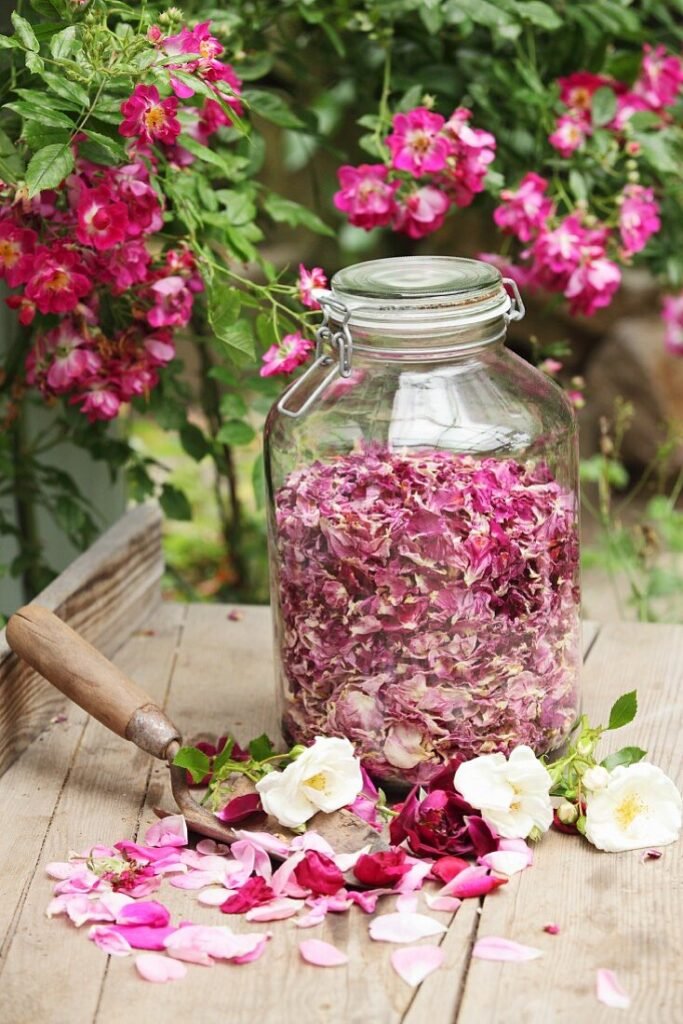
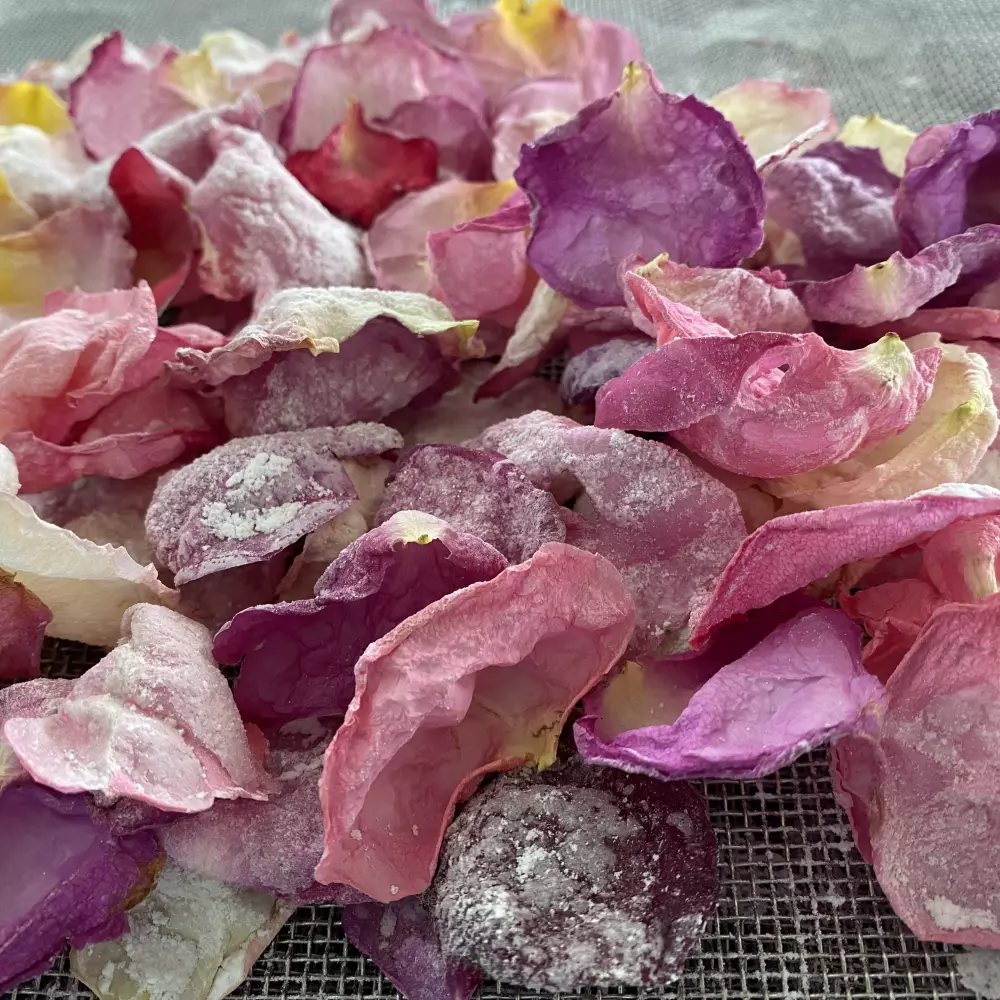
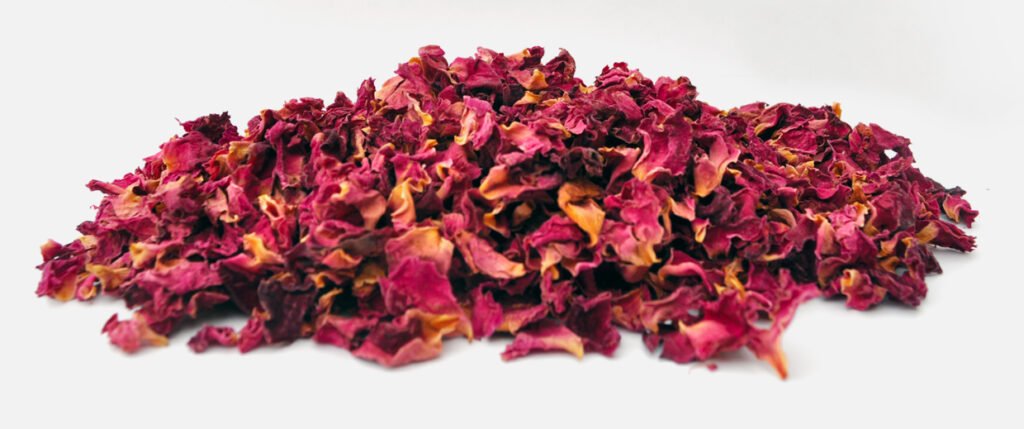
Country of Origin : Egypt
Egypt is renowned for producing high-quality Damask roses, particularly in regions like El-Fayoum and Minya.
Egyptian dried rose petals are prized for their vibrant color, potent fragrance, and consistent quality.
Contact information:
